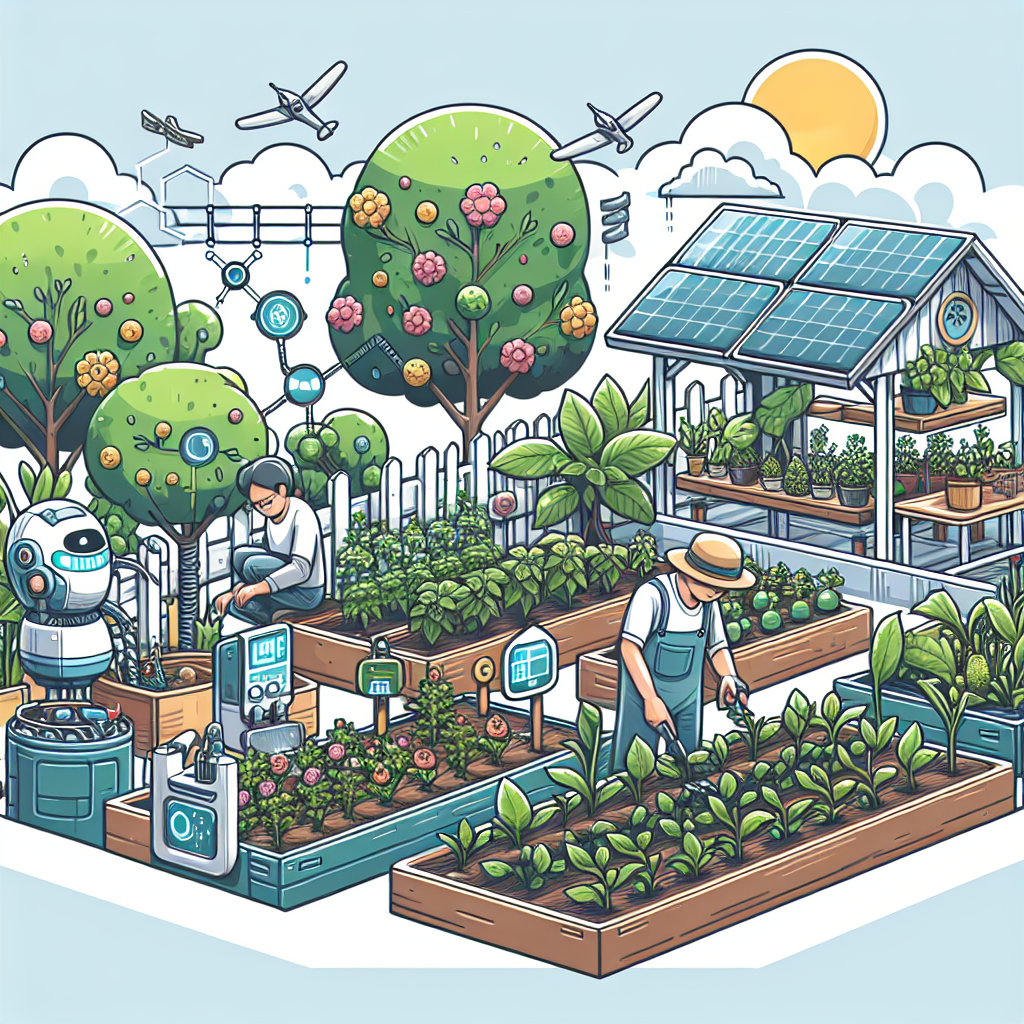The Power of Community Gardens: Transforming Communities Through Food and Connection
This article explores the definition, purpose, and importance of community gardens. It highlights the benefits of community gardens for health and well-being, environmental sustainability, and social connection and community building. The article presents case studies of successful community garden projects and provides insights on creating and maintaining a successful community garden. It also addresses the challenges and solutions in community gardens, including land availability, funding limitations, community engagement, and managing pests and diseases. The article concludes by emphasizing the importance of community gardens and calling for further research and dialogue to enhance their impact and promote their establishment worldwide.

Introduction
Community gardens are shared spaces where individuals from a particular neighborhood or community come together to grow fruits, vegetables, flowers, or herbs collectively. These gardens are often managed by volunteers, and the produce is typically shared among the participants or donated to local food banks. The primary purpose of community gardens is to provide access to fresh and nutritious food, promote sustainable practices, and foster community engagement.
Community gardens play a vital role in addressing various social, environmental, and health challenges faced by modern societies. They provide an opportunity for individuals to reconnect with nature, cultivate their food, and promote sustainable living practices. Furthermore, these gardens serve as platforms for social interaction and community building, fostering a sense of belonging and pride among participants.
Benefits of Community Gardens
2.1 Health and Well-being
"Community gardens offer a powerful response to the obesity epidemic and the rise of chronic diseases." - Dr. Richard Jackson
By providing access to fresh produce and opportunities for physical activity, these gardens contribute to improved health outcomes and can help prevent diet-related illnesses.
2.2 Environmental Sustainability
"Community gardens promote environmental sustainability through practices such as organic gardening, composting, and water conservation." - Expert
They contribute to biodiversity conservation, reduce food miles, and mitigate the negative impacts of conventional agriculture on ecosystems.
2.3 Social Connection and Community Building
"Community gardens are places of social exchange." - Dr. Samina Raja
Community gardens help create social connections and enhance community cohesion. They bring people from diverse backgrounds together, fostering social interaction, intergenerational connections, and cultural exchange.
Case Studies
3.1 The Harlem Grown Project
Founded in 2011, this nonprofit organization transforms vacant lots into thriving urban farms, providing children with hands-on learning experiences, nutritional education, and access to fresh produce.
3.2 The Camden Children's Garden
This 4.5-acre garden serves as both a recreational and educational facility, attracting thousands of visitors annually. It provides a safe space for children to explore nature, learn about gardening, and develop a deeper connection with the environment.
Creating and Maintaining a Successful Community Garden
4.1 Selecting the Right Location
Choosing an appropriate location is crucial for a thriving community garden. Factors such as sunlight availability, soil quality, water access, and proximity to the target community should be considered.
4.2 Securing Funding and Resources
Community gardens often rely on external funding and resources to establish and maintain their operations. Seeking grants, sponsorships, and partnerships with local businesses, organizations, and government agencies can play a crucial role in securing the necessary funds and materials.
4.3 Organizing and Engaging the Community
Successful community gardens require active community involvement and engagement. Initiate outreach and educational programs to raise awareness, recruit volunteers, and encourage participation. Collaborating with local schools, community centers, and faith-based organizations can help broaden the reach and impact of the garden.
4.4 Design and Infrastructure
Designing the layout and infrastructure of the community garden is essential for its functionality and aesthetic appeal. Consider elements such as raised garden beds, walkways, seating areas, and water sources. Consult with landscape architects or experienced gardeners to optimize the design for accessibility and efficient land use.
4.5 Maintaining the Garden
Regular maintenance is crucial to the sustainability of a community garden. Tasks such as watering, weeding, pest control, and soil management should be carried out systematically. Organizing workdays and volunteer schedules can help distribute the workload and ensure the garden's long-term success.
Challenges and Solutions in Community Gardens
5.1 Land Availability and Access
Securing land for community gardens can be a significant challenge, particularly in urban areas. Encouraging policy changes that prioritize community gardens and collaborating with local governments and landowners can help overcome this obstacle.
5.2 Funding and Resource Limitations
Community gardens often face financial constraints and limited access to resources. Developing diverse funding streams, partnering with local businesses, and implementing resource-sharing programs within the community can help address these challenges.
5.3 Community Engagement and Participation
Maintaining consistent community engagement and participation can be challenging. Implementing creative outreach strategies, hosting regular events and workshops, and providing incentives for involvement can help keep community members engaged and committed to the garden.
5.4 Managing Garden Pests and Diseases
Pests and diseases can pose a threat to the productivity of community gardens. Implementing integrated pest management techniques, conducting regular inspections, and providing educational resources on pest and disease prevention can minimize the impact of these challenges.
Conclusion
6.1 Importance of Community Gardens
Community gardens serve as catalysts for positive social, environmental, and health change. They offer a multifaceted solution to various challenges faced by modern societies, including food insecurity, obesity, environmental degradation, and social disconnection.
6.2 Call to Action for Further Research and Dialogue
In conclusion, community gardens have immense potential to transform communities and improve the well-being of individuals. Further research, policy interventions, and community collaboration are needed to enhance the impact of community gardens and promote their establishment worldwide. Join the conversation and explore innovative approaches to community gardening to create sustainable and resilient neighborhoods.